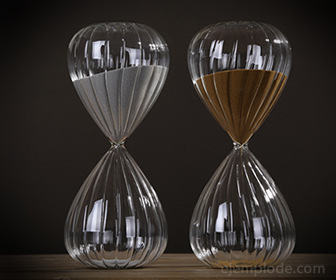Sand Uses
Chemistry / / July 04, 2021
Sand is the common word to refer to the mixture of Silicon Dioxide SiO2 with other inorganic compounds, such as carbonates. It is one of the most abundant natural mixtures on the planet, and it is present in all ecosystems, especially in the desert. It is also a structural component of the oceans. It has varied uses, as in the glass making, on the moisture absorption and in the water purification. Its uses are defined by the main component, which is Silicon Dioxide SiO2.
Silicon Dioxide SiO2
Silicon Dioxide, also called Silica, is found in Nature in very diverse forms of Quartz, like a crystalline deposit. The color of the crystals comes from impurities. Amorphous forms of silica are the agate, the jasper and the onyx.
The hard, shiny parts of straw and bamboo contain silica, and in large proportion it exists also in the skeletons of some marine organisms (sponges and diatomaceous earth or infusoria).
Pure Quartz can be melted in an electric furnace at around 1600 ° C to be molded into vessels, such as glasses, bottles, and tubes, just like glass. The resulting "glass" is milky and translucent, due to the tiny gas bubbles included in the material. Transparent quartz is obtained by melting it in a vacuum, to eliminate gases.
The vessels constructed of quartz have many advantages; the material is less soluble than glass, and has a very small coefficient of thermal expansion, which allows it to undergo sudden changes in temperature without breaking. Thus a Quartz tube can be red-hot and immersed in water without breaking, while ordinary glass in the same conditions breaks into small fragments.
Because quartz passes ultraviolet light better than glass, it is used in mercury vapor arc lamps.
Glass
Glass was made in Egypt as early as 1400 years before Christ. During the Middle Ages, Venice and Bohemia were the important centers of glass manufacturing.
Glass is a mixture of silicates. The approximate composition of a typical lime and soda glass or window glass is Na2O, CaO, 6SiO2It is manufactured by melting together, in the proper proportions, Sodium Carbonate Na2CO3, Limestone or Calcium Carbonate CaCO3, and Arena SiO2.
A glass residue of the same composition from a previous foundry is added as a flux. During the first stages of the melting process, a lot of foam is formed, but when heating continues, all the CO is released.2 and it turns out a clear cast.
The viscous and clear material is poured into molds or pressed into dies, obtaining molded glass objects. Bottles, glasses, jars, and other similar items are manufactured by taking a sufficient quantity of molten glass with an iron tube calledcane, introducing it in a mold and blowing until adopting it to the cavity of this.
Window glass is made by blowing a long cylinder, which is cut from one side, still hot, and flattened onto a smooth surface.
Flat glass is not prepared by blowing, but by pouring the casting onto a flat table and laminating to the desired thickness, then it is roughened on both sides, and polished with English red (Fe2OR3).

Examples of Sand Uses:
1.- To Glass manufacturing: Sand is used as a component of Glass, in combination with Limestone and Sodium Carbonate, when crystallizing, the required transparency and hardness are achieved.
2 in Filters for water treatment: Fine-grained sand is used to pass a load of water through it. The sand particles will retain the impurities and polluting particles.
3.- In Cafes to transmit heat: Turkish coffee is prepared on hot sand beds. The sand is distributed on the hot surface of the plate, and allows to conserve the heat very well and with uniformity. You can immerse the container with coffee in the sand, and it will heat up intensely, until the coffee boils. This is how the drink will be served.
4.- To Fill cushions: Sand, when used to fill cushions, creates comfortable and consistent shapes that perfectly fit whoever uses them.
5.- In articles for decoration: The colored sand is used layered in glass vases, to create interesting visual effects.

6.- On the beach, to build castles and structures: Being the most abundant resource on the beach, sand serves as entertainment for children and adults, functioning as modeling paste.
7.- To keep food fresh. If a slit is made in wet sand and food that will not yet be consumed is introduced; they will stay fresh.
8.- In Building, to prepare the cement mix and give it a better consistency. The sand is sieved to have a uniform granulometry and irregular lumps are not generated.
9.- To moisture absorption: The Silicon Dioxide in the sand is the component that is responsible for retaining the moisture of a environment, so slightly damp objects in the vicinity may dry out more Quick.
10.- To plug wells: Sand has the ability to compact enough to create a safe and uniform cap in wells or even surfaces.
